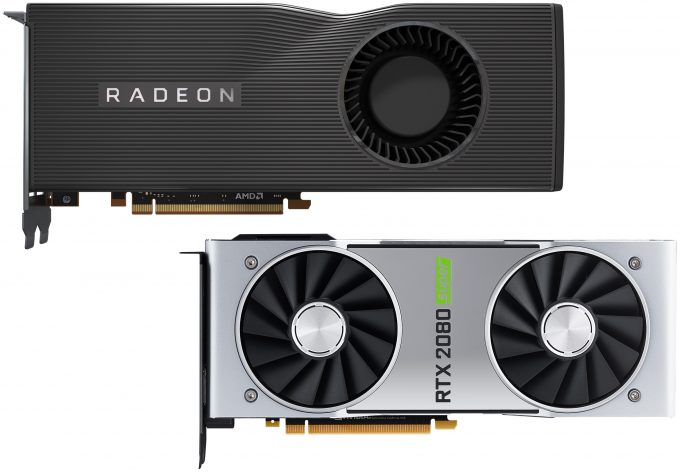- Qualcomm Launches Snapdragon 4 Gen 2 Mobile Platform
- AMD Launches Ryzen PRO 7000 Series Mobile & Desktop Platform
- Intel Launches Sleek Single-Slot Arc Pro A60 Workstation Graphics Card
- NVIDIA Announces Latest Ada Lovelace Additions: GeForce RTX 4060 Ti & RTX 4060
- Maxon Redshift With AMD Radeon GPU Rendering Support Now Available
Workstation Battle: AMD Radeon Navi vs. NVIDIA GeForce SUPER

We’ve taken a look at AMD’s latest Radeons and NVIDIA’s latest GeForces in gaming, so it’s time to turn our attention to creators. We’re pitting the RX 5700 series against NVIDIA’s RTX SUPER, with a spattering of other models added in for a fuller look at what the proviz performance picture looks like today.
Page 6 – Final Thoughts
One thing this article helps prove is the point that not all workloads are built alike. It’s a disastrous idea to have someone go out and randomly pick hardware for their given task. Right before Techgage came into existence, in 2004, a friend of mine purchased an expensive AMD FirePro GPU, simply because he believed the more expensive option would win out in gaming. He soon returned it for a better gaming option at the time, which of course cost less than half as much.
With the professional visualization market, a gaming card can either act as a superb value, or a major detriment. With Siemens NX, for example, gaming cards are treated like trash, where performance is so poor, users are forced down the workstation path. Fortunately, though, even lower-end workstation cards will deliver suitable performance in many of these high-end CAD/CAE suites.
In the basic AMD vs. NVIDIA battle, we have to talk features. AMD doesn’t offer the RTX features NVIDIA does, and at the moment, that could either matter a lot to you, or nothing at all. If you’re not using a solution that takes advantage of either the RT or Tensor cores, then you’re not going to miss out on anything by going with AMD. That of course assumes that your software doesn’t require CUDA support.
We’ve seen from OTOY that RTX support can dramatically improve render times, but we don’t want to count chickens until they hatch, or in this case, until the plugin is out of beta and user feedback starts rolling in. If RTX can actually triple rendering performance in most cases, that’d be a massive win for NVIDIA. Other CUDA addicts like Redshift, Arnold, and V-Ray are said to be adding RTX support soon. Even the free and open-source Blender will be.
Unfortunately for AMD, its Navi cards didn’t fare too well across a bunch of our tests. It did perform extremely well in SolidWorks, CATIA and Blender viewport tests, but in some others, like Metashape’s depth map generation and LuxMark’s Hotel render, both 5700-series cards nonsensical fell behind the older RX 590.
With AMD launching a brand-new architecture with Navi, its launch niggles are not too much of a surprise. Meanwhile, NVIDIA’s SUPER cards are iterations, so its support is strong from the get-go. We’re sure AMD’s situation will improve in the weeks and months ahead, as more updates roll out, either via the graphics driver or the vendor’s software updates.
It’s hard to declare a winner here, given that it truly depends on your workload, but NVIDIA does look quite strong overall, especially thanks in part to the fact that AMD couldn’t even run a couple of our tests. If you’re a Blender user, though, Navi proves to be a great choice, even managing to take out SUPER in the viewport test.
If you’ve read through and are still unsure about which card you should be going with, feel free to leave a comment!
Support our efforts! With ad revenue at an all-time low for written websites, we're relying more than ever on reader support to help us continue putting so much effort into this type of content. You can support us by becoming a Patron, or by using our Amazon shopping affiliate links listed through our articles. Thanks for your support!






